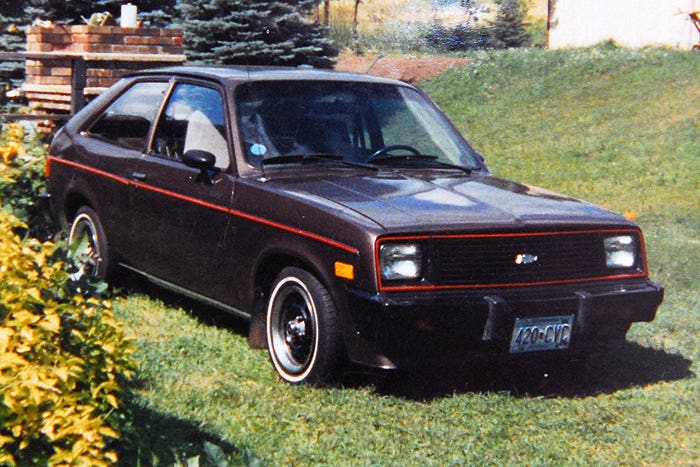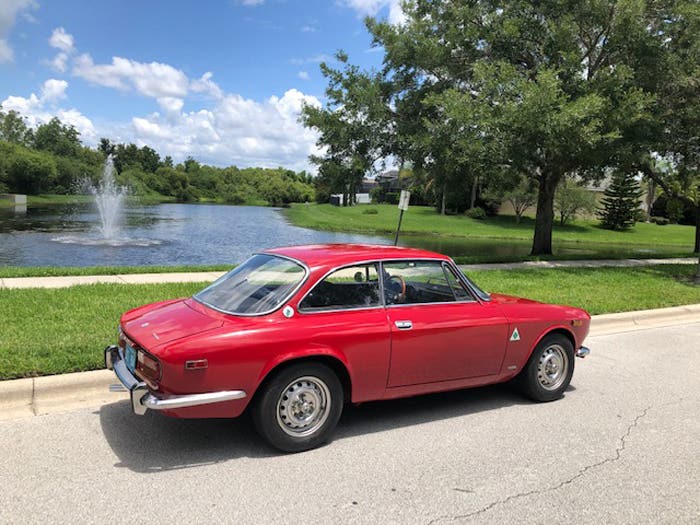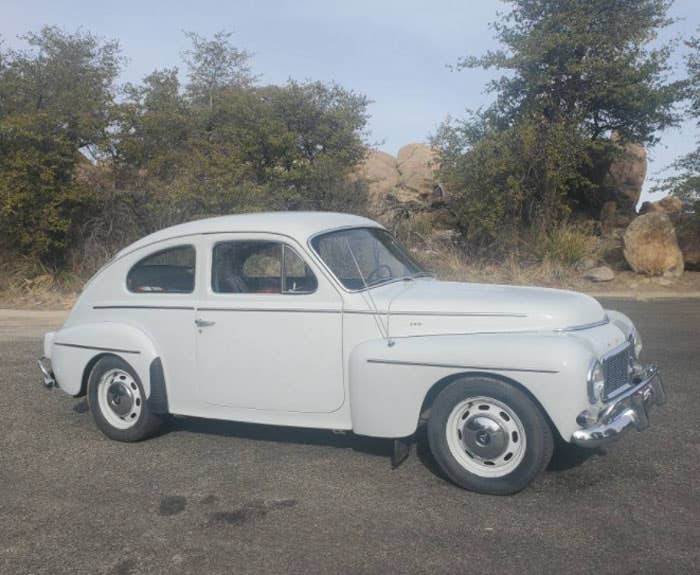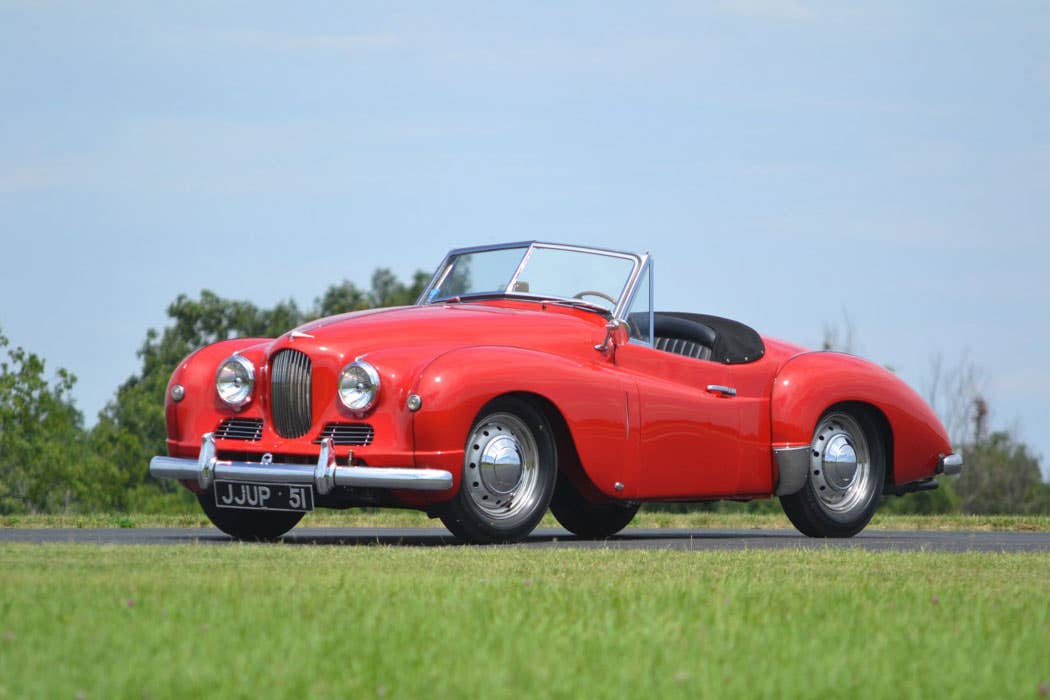Car of the Week: 1955 Messerschmitt KR200
The 1955 Messerschmitt KR200 was a little bubble of fun
Steve Lenoch chuckles quite a bit when he starts talking about his 1955 Messerschmitt. He laughs about how he’s actually owned the strange little microcar twice over the years. He can’t help but giggle a little when you ask him what it’s like to drive one in traffic. And he still finds plenty of humor in trying to explain why he’s attracted to little mini imported cars in the first place.
So why the Messerschmitt? “The only reason I was familiar with them is I like small cars and I’ve also got an Isetta, which I’ve had forever,” laughs the Coralville, Iowa, resident. “And I have another other Messerschmitt. I just enjoy the small cars.”
They don’t come much smaller than Lenoch’s KR200 “Kabinenroller” (English translation: “cabin scooter”). Theoretically, you could squeeze three people in the skinny three-wheeler, but the two folks in the back seat would be very cozy. It’s part car, part motorcycle, and looks a lot like something little kids would ride around in circles at an amusement park. Lenoch doesn’t drive it in circles, but he does work up his nerve to take it out on the road from time to time. The experience is almost always fun, and usually a bit hairy.
“It’s a little scary. I haven’t driven it that much,” he says. “I’ve only had it done for maybe six months. With the bubble closed it’s really hot to begin with. There’s no air. You’ve got the side windows that open up, but you’ve got the sun beating through and it gets pretty warm. It’s more scary, I think, with cars around you. Everybody around you is bigger and people are gawking and you’re afraid you’re gonna get run over. It’s quite an experience. It’s different.”
Lenoch spent quite a while restoring the ’55 KR200. That was his plan originally when he bought the car as a pint-sized basket case. Later on, though, he handed the car over to another micro-car restorer and figured he had seen the last of the three-wheeler. He was wrong.
“When I originally bought it, it had been sitting since 1968 in a garage. I found it in Coralville, Iowa. It was at a salvage yard, an older guy owned it, and he passed away shortly after I bought it from him. It had the plates on it from 1968; still registered from Linn County, Iowa,” Lenoch recalled.
“I purchased it originally in 2009 with the intent of restoring it. It needed a complete restoration. Well, I had it a short time and a guy in Michigan wanted to buy it from me. So I sold it to this guy, and then about a year, year and half ago, his wife called and asked if I had the title to the car because she couldn’t find it. And I said no, I had given him the title. Well, it turned out he passed away — he never got it done. It was still sitting. So she said, ‘I’ve got to get the title and I’m going to sell it.’ I said, ‘OK, I’ll get you a duplicate title and we’ll take care of that.’ But I said, ‘If you are going to sell it I’m going to come and look at it and see what he’s got done.’ Well, he had done some stuff, like paint, but it was still in pieces — a million pieces — and he never got it running. So I went up to Michigan, bought it back, and the title was never changed in those years, so technically I still owned it!”
THREE WHEELS ARE A CHARM
Messerschmitt will probably always be remembered more for its famed World War II German fighter planes than its foray into automobile production, but from 1955-’64, the company did carve its own tiny niche into the car-building landscape. And coincidence or not, the hinged bubble top on the KR200 looks very much like a cockpit lid on a fighter airplane. The steering “wheel” looks suspiciously like an old airplane yoke as well.
In addition to the famed ME109 fighter, the company founded by Willy Messerschmitt in 1923 even developed an early jet plane during the war. With peacetime came a switch to auto parts and such products as sewing machines. Meanwhile, Fritz Fend had been producing a series of small three-wheeled vehicles. Wishing to expand production, Fend inquired about the Messerschmitt facility and his venture took flight.
In 1953, Fend’s design had evolved into the KR175 Messerschmitt Kaninenroller. It was closer to a motor scooter in operation than a car, right down to the handlebar-type steering. The KR175 even lacked a reverse gear and required a pull rope for starting the engine. Two people sat in tandem, one behind the other, again like a motor scooter. About 10,000 were sold in all.
That original design evolved in 1955 into the KR200, which added a reverse gear and was powered by a larger 191cc two-stroke engine with 9.5 hp. Popular as low-budget transportation for a time in their home country, Messerschmitts were more of a novelty in the United States. Their popularity waned before long, however, with competition coming from such minicars as the BMW Isetta. Messerschmitt eventually returned to aircraft production, turning the three-wheel car operation over to Fend after 1964.
If you were looking for a gas sipper, you couldn’t do much better than a Messerschmitt — they were said to cover at least 75 miles on a gallon of gas (mixed with 2-cycle oil, or course). Top speed was around 55 mph, if you had the nerve to push the car that hard.
The KR200 had a full complement of pedals: clutch, brake and accelerator, which made it one step up from the KR175. The brakes were cable operated, and the positive-stop transmission actually gave the car the same four gear ratios in reverse as there were going forward. The throttle was basically a handgrip on the handlebar yoke, which steered the two front wheels. The Fichtel & Sachs engine used a fan for air cooling and was located behind the rear passenger’s seat. Torsilastic springs, which operated similarly to torsion bars, handled the suspension duties.
The Plexiglas canopy was hinged on the right side. There was also a roadster offered in some years with a folding top, and a fixed-top sport roadster that featured a tonneau cover.
Most of the KR200s sold in the United States came out of California, beginning in 1955. Quite a few apparently went to movie stars and Hollywood types, who no doubt knew how to get some attention. Elvis Presley even had one, though he is said to have traded the KR200 away to a Memphis department store owner in exchange for some merchandise.
The cars cost in the neighborhood of $1000 brand new. Of the approximately 40,000 sold in the U.S., about 12,000 came out in 1955. That year proved to be the company’s high-water mark, at least in the U.S. market. After WWII, Messerschmitt was not been allowed to build airplanes, but when West Germany became part of NATO in ’56, the company was able to return to the aircraft business and paid less attention to its automotive endeavors.
NO SMALL FEAT
Lenoch never got to do a lot of work on his ’55 KR200 when he owned it the first time. When he got a second chance with the car, he knew things would be different — but not any easier.
“It never ran when I had it the first time, no. When I got it back it still didn’t run. And that took a while — to get it to run. It worked out, but it was quite a process,” he says. “This one has had basically everything, from the ground up. It sat for all those years, inside, torn apart. Rust-wise, it was fine. Body-wise, it was solid. But the top was broken and everything was [gone]. I sold it basically in pieces and he was going to do all the stuff, and he got some stuff done, but he never got it finished and I still had to find a lot of parts to finish it.”
Surprisingly, acquiring parts for Messerschmitt restorations is not a huge problem, according to Lenoch. At least it wasn’t for him. “You can find [things]. There are three or four major clubs throughout the world and they have a lot of parts. It’s really surprising. People ask me that, and yeah, you can find the parts. You can’t just expect to go to the local auto store and find anything, but you can find stuff. People are making some reproductions. Basically, the only thing I haven’t found is body parts. You can’t find those, but you can find any of the trim work and all the cables and everything that runs it.
“I took it down to the body only, and there was nothing left as far as brakes, and of course everything was rotten on it — tires, brake shoes, everything had to be gone through. The engine and transmission are one unit, and that’s been all gone through. The tires, everything on it is new. All the chrome and brightwork on it has had to be replaced.”
The previous owner had hired an upholsterer to stitch together a gray-and-blue interior to match the paint treatment. It still looks good, but Lenoch says he is going to put his own interior in the KR200. “It looks fine, but it wasn’t what I would have done, so a very, very good friend of mine who has done interiors for me in the past is going to re-do the whole thing this winter. He’s so particular … it will be really good when he’s done with it. I’m not going to take in anywhere fancy and show it for points. It’s gotta run and drive. I won’t drive it that much, but I want it to stay nice. To me it looks pretty good now.”
Lenoch has added a few custom touches on the Messerschmitt just for fun, including some snazzier three-prong wheel covers. “The normal wheel covers are just kind of flat units. The tires are 4.00 x 8. They are the same as a moped!” he noted.
He won’t likely be tackling any snowy Iowa roads in either of his three-wheelers anytime soon, but Lenoch sort of considers his blue bubble-top to be his “foul weather” car — at least compared to his other KR22. “The other one is a red one with a convertible top instead of the plastic,” he says. “ It’s better to drive in the summer because you can take the top off and the sun’s not beating down on you. That one’s a ’56.”
Regardless of which one he takes to a car show or public gathering of any kind, Lenoch knows his three-wheeler is going to be a center of attention. When he rolls up with a big smile on his face, hunched over and trying to see out the tiny windshield, you can tell he’s having a good time. When he climbs out of the car, he knows the questions will start.
“Most people come up and say, ‘I’ve seen it in “Top Gear”’ or something, and ‘American Pickers’ had a big deal on it one time,” he says. “People have seen them on TV or in a magazine, but they haven’t seen one in person. That’s why we like to take it out and show it, so people can see something different.”
SHOW US YOUR WHEELS!
If you’ve got an old car you love, we want to hear about it. Email us at oldcars@aimmedia.com
*As an Amazon Associate, Military Trader / Military Vehicles earns from qualifying purchases.








